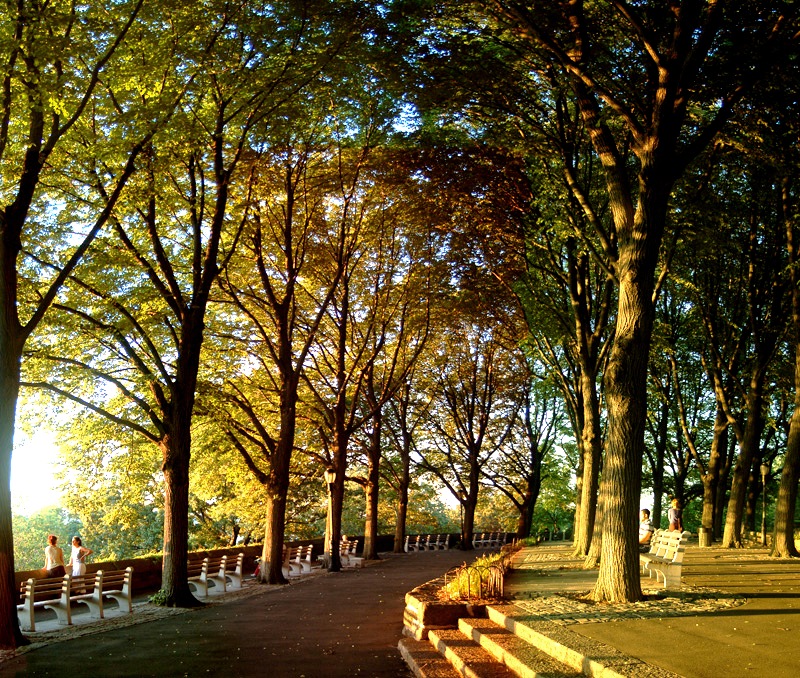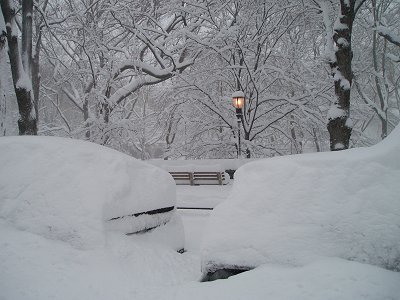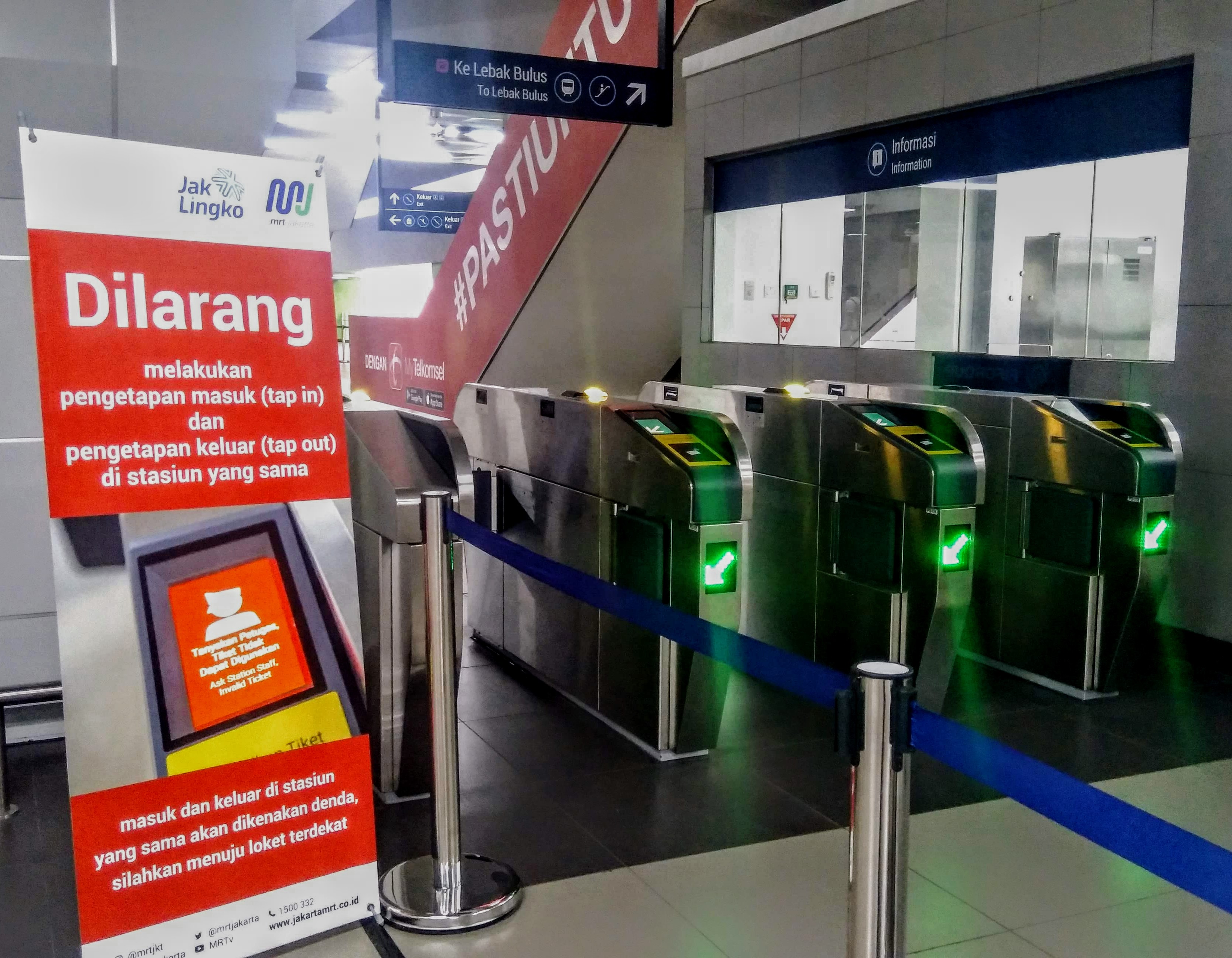|
Dyckman Street (IND Eighth Avenue Line)
The Dyckman Street station (pronounced ) is a station on the IND Eighth Avenue Line of the New York City Subway, located at the intersection of Dyckman Street and Broadway in Inwood, within northern Manhattan. It is served by the A train at all times. History Dyckman Street was formerly named Dyckman Street–200th Street despite Manhattan never having a street numbered 200th. The station opened on September 10, 1932, as part of the city-operated Independent Subway System (IND)'s initial segment, the Eighth Avenue Line between Chambers Street and 207th Street. Construction of the whole line cost $191.2 million. Service at this station was provided with express service from its onset. The station was planned to be rehabilitated as part of the 2015–2019 MTA Capital Program. Station layout There are four tracks and two side platforms, much like a typical local station in the subway system. The two outer tracks lead to the 207th Street terminal station while the two ... [...More Info...] [...Related Items...] OR: [Wikipedia] [Google] [Baidu] |
Manhattan
Manhattan (), known regionally as the City, is the most densely populated and geographically smallest of the five boroughs of New York City. The borough is also coextensive with New York County, one of the original counties of the U.S. state of New York. Located near the southern tip of New York State, Manhattan is based in the Eastern Time Zone and constitutes both the geographical and demographic center of the Northeast megalopolis and the urban core of the New York metropolitan area, the largest metropolitan area in the world by urban landmass. Over 58 million people live within 250 miles of Manhattan, which serves as New York City’s economic and administrative center, cultural identifier, and the city’s historical birthplace. Manhattan has been described as the cultural, financial, media, and entertainment capital of the world, is considered a safe haven for global real estate investors, and hosts the United Nations headquarters. New York City is the headquarters of ... [...More Info...] [...Related Items...] OR: [Wikipedia] [Google] [Baidu] |
Metropolitan Transportation Authority
The Metropolitan Transportation Authority (MTA) is a public benefit corporation responsible for public transportation in the New York City metropolitan area of the U.S. state of New York. The MTA is the largest public transit authority in the United States, serving 12 counties in Downstate New York, along with two counties in southwestern Connecticut under contract to the Connecticut Department of Transportation, carrying over 11 million passengers on an average weekday systemwide, and over 850,000 vehicles on its seven toll bridges and two tunnels per weekday. History Founding In February 1965, New York Governor Nelson Rockefeller suggested that the New York State Legislature create an authority to purchase, operate, and modernize the Long Island Rail Road (LIRR). The LIRR, then a subsidiary of the Pennsylvania Railroad (PRR), had been operating under bankruptcy protection since 1949. The proposed authority would also have the power to make contracts or arrangements with ... [...More Info...] [...Related Items...] OR: [Wikipedia] [Google] [Baidu] |
Inwood Hill Park
Inwood Hill Park is a public park in the Inwood neighborhood of Manhattan, New York City, operated by the New York City Department of Parks and Recreation. On a high schist ridge that rises above the Hudson River from Dyckman Street to the northern tip of the island, Inwood Hill Park's densely folded, glacially scoured topography contains the largest remaining old-growth forest on Manhattan Island, known as the Shorakapok Preserve after an historic Wecquaesgeek village. Unlike other Manhattan parks, Inwood Hill Park is largely natural and consists of mostly wooded, non-landscaped hills. History Site Inwood Hill Park has a human history that goes back to the Pre-Columbian era. Through the 17th century, Native Americans known as the Wecquaesgeek inhabited the area. There is evidence of a main encampment along the eastern edge of the park, known as the village of Shorakapok. The Wecquaesgeek relied on both the Hudson and Harlem Rivers as sources for food. Artifacts and the ... [...More Info...] [...Related Items...] OR: [Wikipedia] [Google] [Baidu] |
Dyckman House
The Dyckman House, now the Dyckman Farmhouse Museum, is the oldest remaining farmhouse on Manhattan island, a vestige of New York City's rural past. The Dutch Colonial architecture, Dutch Colonial-style farmhouse was built by William Dyckman, c.1785, and was originally part of over of farmland owned by the family."Dyckman House Museum" on the New York City Department of Parks and Recreation website It is now located in a small park at the corner of Broadway (Manhattan), Broadway and 204th Street (Manhattan), 204th Street in Inwood, Manhattan. History and description Dyckman was the grandson of Jan Dyckman, who came to the area from Westphalia in 1661.Kuhn, Jonathan. "Dyckman House" in William Dyckman, who inherited the family estate, built the current ho ...[...More Info...] [...Related Items...] OR: [Wikipedia] [Google] [Baidu] |
HEET Turnstile
A turnstile (also called a turnpike, gateline, baffle gate, automated gate, turn gate in some regions) is a form of gate which allows one person to pass at a time. A turnstile can be configured to enforce one-way human traffic. In addition, a turnstile can restrict passage only to people who insert a coin, ticket, pass, or other method of payment. Modern turnstiles incorporate biometrics, including retina scanning, fingerprints, and other individual human characteristics which can be scanned. Thus a turnstile can be used in the case of paid access (sometimes called a faregate or ticket barrier when used for this purpose), for example to access public transport, a pay toilet, or to restrict access to authorized people, for example in the lobby of an office building. History Turnstiles were originally used, like other forms of stile, to allow human beings to pass while keeping sheep or other livestock penned in. The use of turnstiles in most modern applications has been credit ... [...More Info...] [...Related Items...] OR: [Wikipedia] [Google] [Baidu] |
Fort Tryon Park
Fort Tryon Park is a public park located in the Hudson Heights and Inwood neighborhoods of the borough of Manhattan in New York City. The park is situated on a ridge in Upper Manhattan, close to the Hudson River to the west. It extends mostly from 192nd Street in the south to Riverside Drive in the north, and from Broadway in the east to the Henry Hudson Parkway in the west. The main entrance to the park is at Margaret Corbin Circle, at the intersection of Fort Washington Avenue and Cabrini Boulevard. The area was known by the local Lenape tribe as ''Chquaesgeck'' and by Dutch settlers as ''Lange Bergh'' (Long Hill). During the American Revolutionary War, the Battle of Fort Washington was fought at the site of the park on November 16, 1776. The area remained sparsely populated during the 19th century, but by the turn of the 20th century, it was the location of large country estates. Beginning in January 1917, philanthropist John D. Rockefeller, Jr., bought up the "Tryon Ha ... [...More Info...] [...Related Items...] OR: [Wikipedia] [Google] [Baidu] |
Riverside Drive (Manhattan)
Riverside Drive is a scenic north–south thoroughfare in the New York City borough of Manhattan. The road runs on the Upper West Side of Manhattan, generally paralleling the Hudson River and Riverside Park between 72nd Street and the vicinity of the George Washington Bridge at 181st Street. North of 96th Street, Riverside Drive is a wide divided boulevard. At several locations, a serpentine local street diverges from the main road, providing access to the residential buildings. Some of the city's most coveted addresses are located along its route. History Development The of land in the original park between 72nd to 125th Streets were originally inhabited by the Lenape people, but by the 18th century were used for farms by the descendants of European colonists. In 1846, the Hudson River Railroad (later the West Side Line and Hudson Line) was built along the waterfront, connecting New York City to Albany. In 1865, Central Park commissioner William R. Martin put forth ... [...More Info...] [...Related Items...] OR: [Wikipedia] [Google] [Baidu] |
Turnstile
A turnstile (also called a turnpike, gateline, baffle gate, automated gate, turn gate in some regions) is a form of gate which allows one person to pass at a time. A turnstile can be configured to enforce one-way human traffic. In addition, a turnstile can restrict passage only to people who insert a coin, ticket, pass, or other method of payment. Modern turnstiles incorporate biometrics, including retina scanning, fingerprints, and other individual human characteristics which can be scanned. Thus a turnstile can be used in the case of paid access (sometimes called a faregate or ticket barrier when used for this purpose), for example to access public transport, a pay toilet, or to restrict access to authorized people, for example in the lobby of an office building. History Turnstiles were originally used, like other forms of stile, to allow human beings to pass while keeping sheep or other livestock penned in. The use of turnstiles in most modern applications has been credit ... [...More Info...] [...Related Items...] OR: [Wikipedia] [Google] [Baidu] |
Fare Control
In rail transport, the paid area is a dedicated "inner" zone in a railway station or metro station, accessible via turnstiles or other barriers, to get into which, visitors or passengers require a valid ticket, checked smartcard or a pass. A system using paid areas is often called fare control. Passengers are allowed to enter or exit only through a faregate. A paid area usually exists in rapid transit railway stations for separating the train platform from the station exit, ensuring a passenger has paid or prepaid before reaching the railway platform and using any transport service. Such design requires a well-organized railway station layout. In some systems, paid areas are named differently - for example, on railways in the United Kingdom they are called compulsory ticket areas The paid area is similar in concept to the airside at an airport. However, in most cases entrance to the paid area requires only a valid ticket or transit pass. The exception is in certain cases of inter ... [...More Info...] [...Related Items...] OR: [Wikipedia] [Google] [Baidu] |
Sans-serif
In typography and lettering, a sans-serif, sans serif, gothic, or simply sans letterform is one that does not have extending features called "serifs" at the end of strokes. Sans-serif typefaces tend to have less stroke width variation than serif typefaces. They are often used to convey simplicity and modernity or minimalism. Sans-serif typefaces have become the most prevalent for display of text on computer screens. On lower-resolution digital displays, fine details like serifs may disappear or appear too large. The term comes from the French word , meaning "without" and "serif" of uncertain origin, possibly from the Dutch word meaning "line" or pen-stroke. In printed media, they are more commonly used for display use and less for body text. Before the term "sans-serif" became common in English typography, a number of other terms had been used. One of these outmoded terms for sans-serif was gothic, which is still used in East Asian typography and sometimes seen in typeface na ... [...More Info...] [...Related Items...] OR: [Wikipedia] [Google] [Baidu] |
Diamond Crossover
A railroad switch (), turnout, or ''set ofpoints () is a mechanical installation enabling railway trains to be guided from one track to another, such as at a railway junction or where a spur or siding branches off. The most common type of switch consists of a pair of linked tapering rails, known as ''points'' (''switch rails'' or ''point blades''), lying between the diverging outer rails (the ''stock rails''). These points can be moved laterally into one of two positions to direct a train coming from the point blades toward the straight path or the diverging path. A train moving from the narrow end toward the point blades (i.e. it will be directed to one of the two paths, depending on the position of the points) is said to be executing a ''facing-point movement''. For many types of switch, a train coming from either of the converging directions will pass through the switch regardless of the position of the points, as the vehicle's wheels will force the points to move. P ... [...More Info...] [...Related Items...] OR: [Wikipedia] [Google] [Baidu] |
207th Street Station (IND Eighth Avenue Line)
The 207th Street station is a local station on the IRT Broadway–Seventh Avenue Line of the New York City Subway. Located at the intersection of 207th Street and 10th Avenue in the Manhattan neighborhood of Inwood, it is served by the 1 train at all times. History This station was completed in 1906, but since it was in a sparsely populated location, it did not open until April 1, 1907. To address overcrowding, in 1909, the New York Public Service Commission proposed lengthening the platforms at stations along the original IRT subway. As part of a modification to the IRT's construction contracts made on January 18, 1910, the company was to lengthen station platforms to accommodate ten-car express and six-car local trains. In addition to $1.5 million (equivalent to $ million in ) spent on platform lengthening, $500,000 (equivalent to $ million in ) was spent on building additional entrances and exits. It was anticipated that these improvements would increase capacity by 2 ... [...More Info...] [...Related Items...] OR: [Wikipedia] [Google] [Baidu] |


.jpeg)






.jpg)